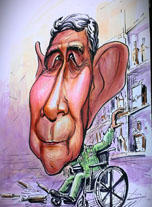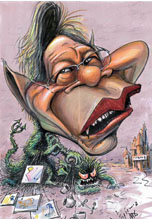Until recently, the country’s khaki-clad leaders roamed the country, “inspected” state projects and offered instructions on how to build a “peaceful and modern nation.” But where are they now?
Ex-Snr-Gen Than Shwe and former Vice Snr-Gen Maung Aye now live in secluded compounds in Naypyitaw and Yangon. They receive regular visitors, including high-ranking military and government officials.
In November, as Myanmar marked the Kathein festival, the country’s richest tycoons, as well as politicians including President U Thein Sein and Union Parliament Speaker U Shwe Mann, paid their respects to ex-Snr-Gen Than Shwe. The former head of the regime is praised within the powerful military establishment as the man who formulated the road map for the transfer of power and a “bloodless transition.”
The former dictator, who is still very much regarded as Myanmar’s central authority figure by the generals and ex-generals now in power, is said to be “worried” about the country’s future, but passes his time at home largely by reading books.
Ex-Vice Snr-Gen Maung Aye, meanwhile, has suffered a stroke and is paralyzed. Informed sources say the no-nonsense general, who was once based in northern Shan State, has completely retired from politics and administering the armed forces. “He is in a wheelchair and is no longer interested in politics—he’s waiting for his day to come,” said a source close to the family of the former junta’s No. 2.

The general, who was a renowned whiskey drinker, is said to have stopped taking alcohol and to have become more religious. Snr-Gen Min Aung Hlaing, the current commander-in-chief, recently paid a visit to the retired general’s residence, where he held a Kathein ceremony and offered robes to Buddhist monks.
Former spy chief U Khin Nyunt, now free from house arrest after being purged from the regime, recently opened an art gallery in Yangon. The former general, long known as Myanmar’s “Prince of Evil” for his role in torturing dissidents following the crackdown on the 1988 pro-democracy uprising, showed up to his gallery’s opening in a white tunic, and is also reportedly funding the building of a pagoda. In a recent interview with the Wall Street Journal, he lamented that no one has sought his advice as a political strategist or consultant.
But what of U Tin Aung Myint Oo, the former vice president, who abruptly left his post with little explanation last year? The formidable former general, who won several titles for bravery in the 1970s and went on to control the country’s powerful trade council (and who is considered to be one of the richest men in Myanmar), is no longer in the news.

U Tin Aung Myint Oo’s departure was put down to health reasons, and he was said to suffer from throat cancer. However, the general once dubbed a hardliner is often spotted on the golf courses of Yangon and appears to be in good health. The former general remains tight-lipped about why he left the post, but he is said to be unhappy with—and to have questioned the “sincerity” of—President U Thein Sein.
Aside from playing golf, he is said to be building a bell in the Ayeyarwady delta, in the manner of Myanmar’s former monarchs, who often made merit by building pagodas and bells and donating to religious institutions. U Tin Aung Myint Oo’s bell is reportedly going to overshadow the Mingun Bell in Sagaing Region, which weighs 199,999 pounds (90,718 kg). The buying up of vast amounts of bronze to make the bell is said to have driven up local prices of the metal.
Although they are absent from public life, it seems the ex-generals’ large egos remain intact.
This story first appeared in the December 2013 print issue of The Irrawaddy magazine.
















